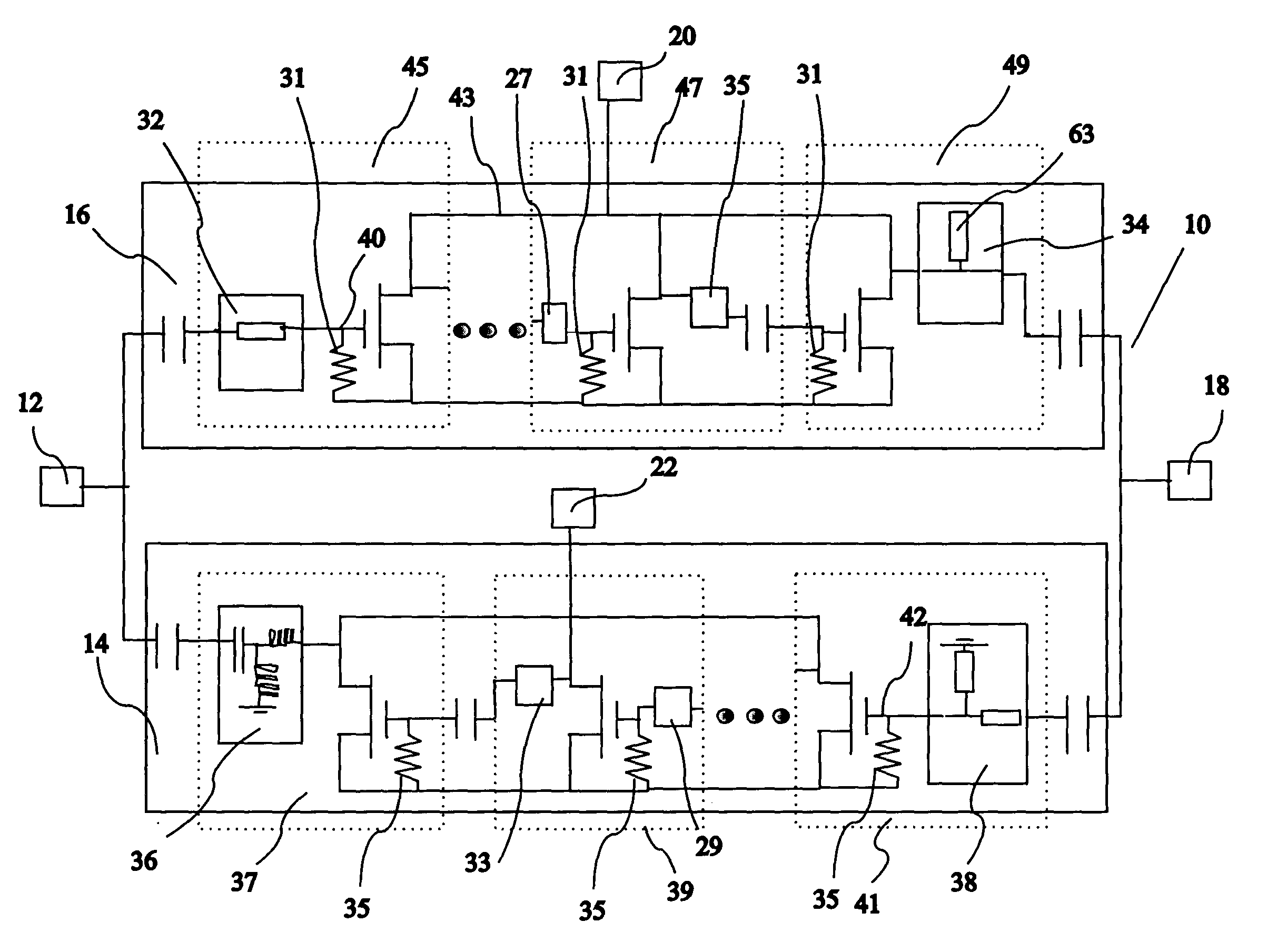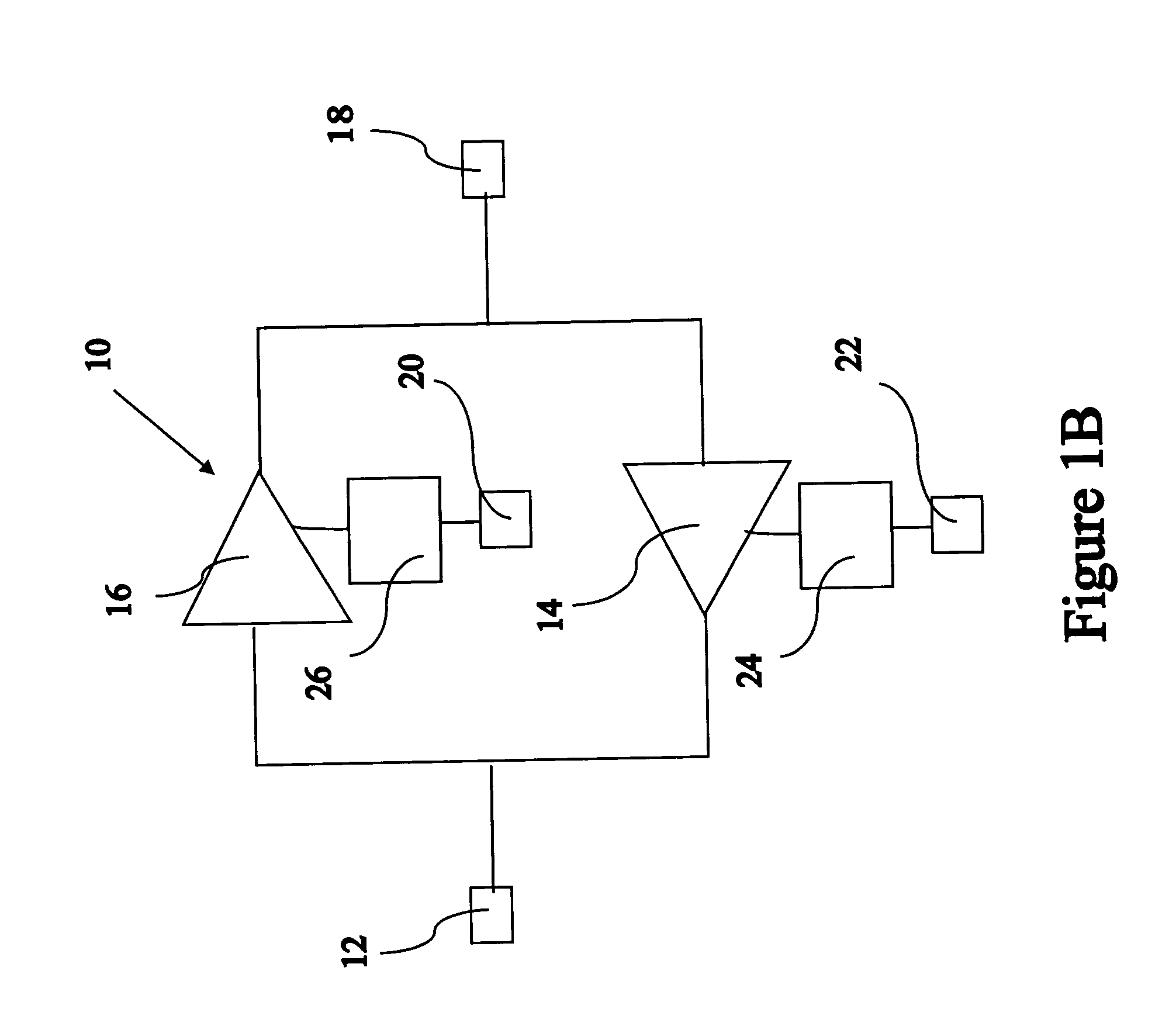Asymmetric, optimized common-source bi-directional amplifier
a bi-directional amplifier and common-source technology, applied in the direction of rf amplifiers, two-way amplifiers, transmission, etc., can solve the problems of low mean time to failure and rework, increased noise figure for the receive mode, and ineffective amplifier approaches, etc., to achieve high power performance, optimize desired performance, and achieve high power amplification
- Summary
- Abstract
- Description
- Claims
- Application Information
AI Technical Summary
Benefits of technology
Problems solved by technology
Method used
Image
Examples
Embodiment Construction
[0021] Referring particularly to FIG. 1A, a block diagram of a bi-directional amplifier 10 of the present invention is shown, which bi-directional amplifier 10 includes a first mode and a second mode. Further, bi-directional amplifier 10 includes a first amplification path and a second amplification path. For purposes of describing the present invention, said first mode is a receive mode, said second mode is a transmit mode, said first amplification path is a receiver amplifier 14, and said second amplification path is a transmitter amplifier 16. Further, it shall be noted that the present invention may include any first amplification path and any second amplification path and should not be limited to receiver amplifier 14 and transmitter amplifier 16.
[0022] In addition, bi-directional amplifier 10 comprises a first port 12, a second port 18, a receiver electrode 22, and a transmitter electrode 20. Receiver electrode 22 and transmitter electrode 20 controls the direction of a signa...
PUM
 Login to View More
Login to View More Abstract
Description
Claims
Application Information
 Login to View More
Login to View More - R&D
- Intellectual Property
- Life Sciences
- Materials
- Tech Scout
- Unparalleled Data Quality
- Higher Quality Content
- 60% Fewer Hallucinations
Browse by: Latest US Patents, China's latest patents, Technical Efficacy Thesaurus, Application Domain, Technology Topic, Popular Technical Reports.
© 2025 PatSnap. All rights reserved.Legal|Privacy policy|Modern Slavery Act Transparency Statement|Sitemap|About US| Contact US: help@patsnap.com



